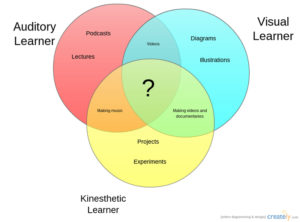Tag: differentiation
Warm-ups–Watch the video
Warm-ups
This video is from a series I taught for school districts. It is now available for free, here on Ask a Tech Teacher:
–summarized by NoteGPT
Highlights
- 🖥️ Engaging with technology enhances student learning and excitement.
- 📅 Class warm-ups help transition students into learning mode efficiently.
- ⏱️ Student independence during warm-ups allows teachers to manage other tasks.
- 🎨 Utilizing tools like Smore for creating engaging class materials.
- 📚 Presentation boards encourage student collaboration and sharing.
- 💻 Blogging fosters communication and feedback among classmates.
- 🔄 Responsive classroom activities can be adapted for technology use.
Key Insights
- 🧑🏫 Technology Integration: Effectively using technology in education not only captivates students but also promotes a deeper understanding of the material. Encouraging tech-related engagement can transform traditional lessons into interactive experiences.
- 🎯 Purposeful Warm-Ups: Implementing structured class warm-ups minimizes downtime and maximizes learning. These activities set the tone for the lesson and help students focus as they transition into the learning environment.
- 🤝 Student Empowerment: Allowing students to take charge of their warm-up activities fosters independence. This approach not only builds responsibility but also encourages them to become active participants in their learning journey.
- 📊 Creative Teaching Tools: Utilizing platforms like Smore helps educators design visually appealing and informative materials that enhance communication with students and parents, making learning more accessible.
- 👥 Collaborative Learning: Activities such as presentation boards and blogging promote peer-to-peer learning. This collaboration strengthens their understanding and retention of the material while building a supportive classroom community.
- 🔄 Feedback Mechanisms: Incorporating blog comments or discussion forum posts enables meaningful interaction. This feedback loop enhances the learning process and encourages critical thinking among students.
- 🏫 Responsive Classroom Strategies: Integrating responsive classroom techniques with technology can create an inclusive and engaging learning environment. These strategies help maintain student interest and facilitate smooth transitions during lessons.
Share this:
How do you teach the hard to teach class? Watch the video.
How do you teach the hard to teach class? Differentiate
This video is from a series I taught for school districts. It is now available for free, here on Ask a Tech Teacher:
Summary
Strategies for teaching challenging classes include student involvement, differentiated instruction, and utilizing technology for engagement.
Highlights
- 📚 Student Input: Encourage students to provide input on learning goals.
- 🖥️ Tech Tools: Incorporate web-based tools for enhanced learning experiences.
- 🔄 Flipped Classroom: Reverse traditional teaching methods to engage students effectively.
- 💬 Back Channel Devices: Use platforms for real-time student feedback during lessons.
- 🤝 Collaboration: Work with other teachers on projects for a cohesive learning experience.
- ✍️ Active Participation: Transform students from passive consumers to active contributors.
- 🎨 Creative Assessment: Move away from static checklists and embrace dynamic evaluation methods.
Key Insights
- 🌍 Understanding Learning Styles: Recognizing that students learn differently allows for tailored teaching approaches. Emphasizing this can create a more inclusive classroom environment.
- 🔧 Encouraging Risk-Taking: Allowing students to explore and troubleshoot fosters independence and problem-solving skills, preparing them for real-world challenges.
- 🎯 Setting Big Goals: Establishing overarching goals rather than granular tasks helps students focus on the essential learning objectives.
- 💻 Emphasizing Digital Citizenship: Teaching students how to use digital tools responsibly equips them for future academic and professional environments.
- 🏆 Value of Mistakes: Demonstrating that mistakes are learning opportunities encourages resilience and promotes a growth mindset among students.
- 💡 Differentiation in Instruction: Adjusting lessons based on individual student needs can re-engage those who may struggle with traditional methods.
- 🕒 Flexibility in Time Management: Allowing students to spend a portion of their time on self-directed projects cultivates creativity and ownership over their learning.
–summarized by NoteGPT
This video is from a series I taught for school districts. It is now available for free to Ask a Tech Teacher subscribers. Videos include (in alphabetic order): (more…)
Share this:
What is a Growth Mindset?
It’s no secret many parents are frustrated with public schools. Are kids learning to think or just to pass tests? Are they spending classroom time wisely or just doing what’s always been done? Are we developing lifelong learners or kids who can’t wait to graduate?
If this describes you, you’re not alone in your concerns, but there’s hope. Consider a pedagogy that transcends rote memorization and the stock drills often found in today’s classrooms, expects critical thinking that teaches how to learn anything — not just school subjects. It’s called a “Growth Mindset”. In an Edsurge article by Rupa Gupta, former Redesign Administrator at Burnett Middle School in San Jose, Calif., she summarized the issue like this:
“In a recent national survey, 97 percent of teachers agreed that all students can and should have a growth mindset, and that same number said fostering a growth mindset is an important part of a teacher’s job. Yet only 50 percent said they have adequate solutions and strategies to shift mindset.”
So nearly everyone agrees this type of cerebral approach is important to real learning but few know how to make it happen.
What is Growth Mindset?
Let me back up a moment and define “Growth Mindset” more clearly. Most people believe basic human qualities like intelligence and talent are fixed traits: nature supersedes nurture. Kids are born with the characteristics that will mold their future. They are good at math or they aren’t. They can throw a football well or not. As kids grow, they figure out what they can and can’t do and adjust learning and life as needed to these truths. They come to believe that understanding and adapting to this process equates to success.
In a Growth Mindset, people believe ability can be developed through dedication and hard work. The cerebral and physical traits they were born with are just the starting point. Students are responsible for setting the patterns and strategies that allow them to succeed, by evaluating what they can do at any given point and making a plan for learning everything else.
Share this:
7–no 10–OK, 13 Skills I Teach With Blogging
Blogging has become de rigeur in the Grade 3-8 classroom. It is flexible, scalable, and encourages diversity in both learning and teaching. Handled right, blogs can be used for pretty much any need that arises in the classroom. It has the added benefit of being an activity that students want to do. They like that it’s online, with lots of multimedia options, and a focus not on writing but communication.
I decided to track the skills I teach through blogging. When I started, I had seven, but as I continued, it exploded to this long list that I’m adding to even as I write this post. Read through these, tell me other ways you use it in your class:
Collaboration
Students collaborate on blogs when they comment on the ideas of others. They can also take it a step further by collaborating on the blog itself. Be co-owners of the blog, themed to a particular topic, and work together to fulfill goals.
Developing a profile
Blog profiles must be pithy, concise, and clear. What a great way for students to think through what makes them who they are and share it in as few words as possible. I am constantly reworking my own as I figure out a better way to communicate the gist of who I am.
Differentiation
Share this:
Last Chance: Differentiated Instruction Online Class (MTI 563)
MTI 563: The Differentiated Teacher
MTI 563 starts in one week–Monday, April 27, 2020! Last chance to sign up. Click this link; search for MTI 563 and click for more information and to sign up.
What is it
Differentiation in the classroom means meeting students where they are most capable of learning. It is not an extra layer of work, rather a habit of mind for both teacher and student. Learn granular approaches to infusing differentiation into all of your lesson plans, whether you’re a Common Core school or not, with this hands-on, interactive class. Ideas include visual, audio, video, mindmaps, infographics, graphic organizers, charts and tables, screenshots, screencasts, images, games and simulations, webtools, and hybrid assessments.
Assessment is based on involvement, interaction with classmates, and completion of projects so be prepared to be fully-involved and an eager risk-taker. Price includes course registration, college credit, and all necessary materials. To enroll, click the link above, search for MTI 563 and sign up. Email askatechteacher at gmail dot com for questions.
What You Get
-
- 5 Activities (topics)
- tech ed videos, lesson plans, articles
- 5 weeks
- 4 virtual meetings
- Unlimited questions/coaching during virtual face-to-face meetings and other pre-arranged times. We stay until everyone leaves.
- 3 college credits
Course Objectives
At the completion of this course, you will be able to:
-
- Use technology to differentiate for student learning styles
- Understand how differentiating content and presentation engages a great proportion of learners
- Ensure that the outcome of student learning demonstrates understanding
- Vary assignments to address all learners’ needs
- Create an inclusive learning environment in the classroom
Who Needs This
This course is designed for classroom teachers, tech teachers, integration specialists, media specialists, LMS, administrators, principals, homeschoolers, teachers of teachers, and pre-service professionals.
What Do You Need to Participate
-
- Internet connection
- Accounts for online tools like a blog, Twitter, various web-based tools
- Google account (can be your school account or your personal one)
- Ready and eager to commit 5-10 hours per week for 5 weeks to learning tech
- Commitment to review materials prior to the virtual meeting (so you are prepared to address questions with classmates)
- Risk-taker attitude, inquiry-driven mentality, passion to optimize learning and differentiate instruction
NOT Included:
-
- Standard software assumed part of a typical ed tech set-up
- Tech networking advice
- Assistance setting up hardware, networks, infrastructure, servers, internet, headphones, microphones, phone connections, loading software
Screenshots
[gallery type="slideshow" ids="59175,59181,59177,59178,59179,59180,59176"]Share this:
Differentiation Simplified with Study.com
 Study.com is an online distance learning portal that provides over 70,000 lessons in fifteen subjects (including algebra, calculus, chemistry, macro- and microeconomics, and physics) aligned with many popular textbooks. Resources include not only videos but study tools, guides, and more. You can read more detail on my Study.com review here.
Study.com is an online distance learning portal that provides over 70,000 lessons in fifteen subjects (including algebra, calculus, chemistry, macro- and microeconomics, and physics) aligned with many popular textbooks. Resources include not only videos but study tools, guides, and more. You can read more detail on my Study.com review here.
Today, I want to talk about Study.com’s emphasis on differentiated instruction.
When I first discovered Study.com, I was blown away by its unique approach to providing passionate learners with a college education that fit their lifestyle. If you are that person who struggles with traditional campus-based classes, has a full-time demanding job, can’t get to a campus because of transportation issues, lives on a tight budget but still values high-quality education, AND you are committed to earning a college degree, do yourself a favor and visit Study.com’s website. I’ve worked with Study.com in the past and come to realize the high value they place on differentiating instruction and meeting students where they are ready to learn, so when they wanted to share the news of their online class teaching the basics of differentiating in the classroom, they knew I would want to help.
To me and many other educators:
Differentiated instruction is at the core of effective teaching.
What is differentiation?
Differentiated learning can be defined this way:
With differentiated instruction, teachers proactively create options to accommodate a diverse range of learners while keeping the whole class on track. Teachers observe students carefully in order to design experiences that match the learning styles of the class and the differing levels of ability and understanding. —Study.com
You might call it ‘personalized learning’ or even ‘blended learning’ but at its most basic, differentiated learning is teaching in ways that best serve individual students–providing different resources and lesson plans to suit different learning styles. If for you, the term ‘differentiation’ should always be followed with, “Where am I supposed to find the time?“, it’s because too often, differentiation is conflated with the tedium of creating individual lesson plans for each and every student. Me, I’ve never done that. Instead, I offer a variety of media that address the lesson. Students do the work of picking what is best for them and selecting the assessment medium best suited to their communication style be it audio, video, text, visual, music, art, or another.
Key principles of differentiation
Share this:
Differentiating with Personalized Learning
Personalized learning is the latest buzzword in an education environment bursting with new ideas but this one is impressive. In a sentence, personalized learning:
“tailors instruction, expression of learning, and assessment to each student’s unique needs and preferences.” — ISTE
If you think it sounds like differentiated instruction, it does with this caveat: Personalized learning is student-directed, student-paced, and designed for each learner.
Why switch to personalized learning?
There are many reasons to take a deep dive into personalized learning. Some schools realize students aren’t learning to their full potential. They see this not just in test results but in student response to the grade-level curricula. They feel it is unrelated to what happens to them outside of school. We as teachers know that math and science can easily be taught using real-life experiences in lieu of a textbook. The problem in the past has been convincing our learning partners of that truth. Now, anecdotal evidence shows that well-delivered personalized learning encourages excitement about learning, improves test scores, and leaves students wanting to learn even complicated math and science topics.
Share this:
What is the VARK model of Student Learning?
 If you use the VARK model of Student Learning, you know why I’m excited about it. VARK started as a questionnaire to help students and teachers understand their best approach to learning but has since become more of a guideline for teaching and learning. The questionnaire is deliberately short (thirteen-sixteen questions, depending upon which version you take) in order to prevent student survey fatigue.
If you use the VARK model of Student Learning, you know why I’m excited about it. VARK started as a questionnaire to help students and teachers understand their best approach to learning but has since become more of a guideline for teaching and learning. The questionnaire is deliberately short (thirteen-sixteen questions, depending upon which version you take) in order to prevent student survey fatigue.
The acronym VARK refers to four learning modalities — Visual, Auditory, Reading/Writing, and Kinesthetic. Though often classroom lessons focus on the Visual, with a bit of preparation, they can be taught using all four modalities thus accommodating students who learn best in a different way. Why go through this extra effort? VARK’s creator, Neil Fleming, explains it this way:
- Students’ preferred learning modes have a significant influence on their behavior and learning.
- Information that is accessed through students’ use of their modality preferences shows an increase in their levels of comprehension, motivation, and metacognition.
For me, that extra time and effort is a no-brainer. Let me back up a moment and explain how I got to that point. I realized after a few years of teaching that something was wrong with the methodology I had been taught. Lots of clever, smart kids weren’t getting what I was putting out. I taught in a way that addressed how the majority learned (because that covered most kids, didn’t it?) but that turned out to be more like a plurality. Or less. In fact, where that plurality of kids might be the biggest group in the class, those that weren’t learning in this prescriptive manner was an even bigger group. To say it another way:
What the Bell Curve considers the “typical student” was always far outnumbered by those who weren’t.
Interestingly enough, Dr. Fleming reports that Kinesthetics (the K in VARK) is the most common learning style though not the most common teaching style.
Share this:
What is a Growth Mindset?
 It’s no secret many parents are frustrated with public schools. Are kids learning to think or just to pass tests? Are they spending classroom time wisely or just doing what’s always been done? Are we developing lifelong learners or simply kids who can’t wait to graduate?
It’s no secret many parents are frustrated with public schools. Are kids learning to think or just to pass tests? Are they spending classroom time wisely or just doing what’s always been done? Are we developing lifelong learners or simply kids who can’t wait to graduate?
If this describes you, you’re not alone in your concerns, but there’s hope. Consider a pedagogy that transcends rote memorization and the stock drills often found in today’s classrooms, expects critical thinking that teaches how to learn anything — not just school subjects. It’s called a “Growth Mindset”. In an Edsurge article by Rupa Gupta, former Redesign Administrator at Burnett Middle School in San Jose, Calif., she summarized the issue like this:
“In a recent national survey, 97 percent of teachers agreed that all students can and should have a growth mindset, and that same number said fostering a growth mindset is an important part of a teacher’s job. Yet only 50 percent said they have adequate solutions and strategies to shift mindset.”
So nearly everyone agrees this type of cerebral approach is important to real learning but few know how to make it happen.
What is Growth Mindset?
Let me back up a moment and define “Growth Mindset” more clearly. Most people believe basic human qualities like intelligence and talent are fixed traits: nature supersedes nurture. Kids are born with the characteristics that will mold their future. They are good at math or they aren’t. They can throw a football well or not. As kids grow, they figure out what they can and can’t do and adjust learning and life as needed to these truths. They come to believe that understanding and adapting to this process equates to success.
In a Growth Mindset, people believe ability can be developed through dedication and hard work. The cerebral and physical traits they were born with are just the starting point. Students are responsible for setting the patterns and strategies that allow them to succeed, by evaluating what they can do at any given point and making a plan for learning everything else.
Share this:
169 Tech Tip #126: 7 Tips to Differentiate with Tech
 In these 169 tech-centric situations, you get an overview of pedagogy—the tech topics most important to your teaching—as well as practical strategies to address most classroom tech situations, how to scaffold these to learning, and where they provide the subtext to daily tech-infused education.
In these 169 tech-centric situations, you get an overview of pedagogy—the tech topics most important to your teaching—as well as practical strategies to address most classroom tech situations, how to scaffold these to learning, and where they provide the subtext to daily tech-infused education.
Today’s tip: #126–7 Tips to Differentiate with Tech
Category: Differentiation
Sub-category: Teaching, Pedagogy
Here are seven ways to differentiate instruction every day:











































